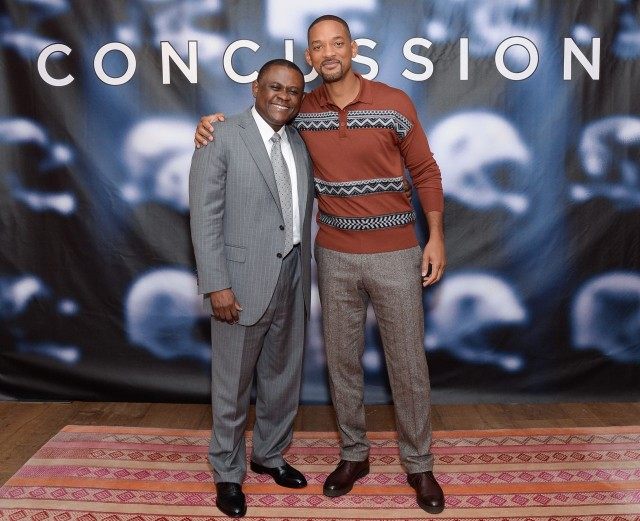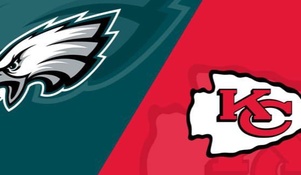The Concussion Movie is part Fantasy Football
"When Omalu’s character says, at one point in the film, that “God did not intend for us to play football” and later warns that as long as we do, “men will continue to die,” he’s appealing not to fact-based objective truth but to an alternate reality - an emotional, spiritual one - that has come to dominate the enlightened person’s understanding of the NFL." - Daniel Engber, from his article “Concussion Lies” posted at Slate.com

The article written by Daniel Engber is probably one of the best and most accurate pieces of journalism I have read regarding the movie “Concussion” and the media hype that has distorted the facts about CTE and the health of pro football players in general. I hope all of my alumni brothers will take the time to read it at this link: Concussion Lies
I saw the movie “Concussion” this past weekend and it just confirmed what I already knew about Hollywood and the motion picture industry - they aren’t really interested in the truth, they’re interested in selling tickets and making money, and if that means you have to bend the truth and tell a few lies to build up the drama……then so be it.
To be certain, the NFL really did attempt to discredit Dr. Omalu’s research and deny the truth about the effects of concussions and their impact on players. Unfortunately, this movie goes way beyond that and leaves the audience with the impression that CTE is what is driving football players crazy, destroying their minds and eventually leading them to suicide.
Most of the former players I know are leading healthy, productive lives. Obviously, there are some former players that are experiencing major difficulties, but not nearly to the degree that this movie would have us believe. Keep in mind, only 25% of former players filed lawsuits against the NFL over the injuries they claimed were a result of concussions and sub-concussive blows to the head.
In a Time.com interview, Dr. Omalu said “In my opinion, taking professional football players as a cohort, I think over 90% of American football players suffer from this disease. Over 90% of players who play to the professional level have some degree of this disease. I have not examined any brain of a retired football player that came back negative.” Maybe that’s because the only brains he has examined were from players that were seriously messed up – emotionally, spiritually and psychologically. The brains that Omalu examined were from players that were already exhibiting signs of severe cognitive impairment while they were living. But what about the thousands of players who are doing just fine? How do we explain why they are not symptomatic? We can’t explain it - and that was just one of the problems our lawyers faced during the litigation and the negotiations leading up to the Settlement. We still don’t know enough about CTE.
Omalu goes on to say “They could have maybe minimal symptoms, mild symptoms, moderate symptoms, or severe symptoms. I meet with retired football players. Some are well-dressed, some are well-spoken, but when you talk to them personally they will admit to you that they are having problems. But they are managing their problems. They have impaired memory, they’re having mood problems. They are being treated by their psychiatrists. So I think 90 to 100% of all of them will have some residual problem from their exposure to thousands of blows to the head.”
I don’t know if 90 to 100% of us will have some residual problems, but if we do develop moderate or severe symptoms of cognitive impairment, it’s nice to know that the NFL Concussion Settlement will be there to help us.
In the Time.com interview they asked Dr. Omalu the question “Right now, CTE can only be officially diagnosed post-mortem. How close are we to finding a way to diagnose CTE in the living?”
Omalu’s response: “CTE can be diagnosed in the living. Just like Alzheimer’s disease can be diagnosed in the living. And when you make such diagnosis, it is based on the continuation of symptoms. The prevailing clinical scenario of the patient.”
To my knowledge, Dr. Omalu is one of the only doctors in the U.S. that has claimed that CTE can be definitively diagnosed in the living. I’m not trying to pile on – he’s been victimized enough – but in the face of all the research that has been conducted, I’m surprised he would make that statement. There's even a question as to whether Dr. Omalu actually discovered CTE. In a recent article, fellow researchers and a medical ethicist say Omalu's role in the movie was exaggerated and that he goes too far when he publicly takes credit for naming or discovering CTE.
"It's just not true, and I think he knows that," said William Stewart, a neuropathologist at Queen Elizabeth University Hospital in Glasgow, Scotland. "Chronic traumatic encephalopathy has been around for decades. It's not a new term," said Stewart. "The only thing I would say that Bennet has done is that he identified it in an American footballer."
In the movie, Omalu draws a straight line of causation in the death of former Pittsburgh Steeler Terry Long when he says “Football gave him CTE, and CTE told his brain to drink a gallon of antifreeze.”
If only it were that simple.
Robert Stern, a professor of neurology and neurosurgery at Boston University School of Medicine and a founder of the Boston University Center for the Study of Traumatic Encephalopathy said "There has really been so much hype surrounding C.T.E., so there is a real need for making sure the public knows that this type of science moves slowly and must move very carefully."
The research did not move slowly and carefully, especially when Dr. Julian Bailes, an associate of Dr. Omalu's, conducted research at UCLA and started a firestorm of media on this issue by claiming they could finally detect CTE in living persons.
In an article about how the media got punked on the CTE claims made by some former players, Daniel Flynn wrote, "The unusual decision to release this claim to the sports press, rather than hold it up for scrutiny in an academic publication first, speaks to the interests - financial rather than scientific - of the TauMark company behind the test."
And guess who is a part owner in TauMark? Dr. Omalu.
What amazes me is that Bennet Omalu and Julian Bailes wrote an article in Frontiers of Neurology that totally contradicted what they were telling the media. They said “diagnosis of CTE remains autopsy based,” there is a “lack of specific diagnostic criteria required for pre-mortem clinical diagnosis,” and that “currently no accepted method of diagnosing CTE until post-mortem pathological analysis has been conducted.”
Here is an article that discusses the contradictions in Omalu’s statements and the FDA’s letter to UCLA and Omalu’s business partner telling them to stop violating the Federal Food, Drug, and Cosmetic Act on fraudulent claims: Concussion’ Doctor Played by Will Smith Delivers Lines to Journalists at Odds with Writings to Scientists
If that wasn't enough, now there is a question as to whether TauMark has profited from the UCLA-licensed product that Omalu’s not-for-profit organization - Brain Injury Research Institute - supported with a grant to study its effectiveness in diagnosing CTE among living former NFL players. You can read about that here: Suspicious connection between concussion movie hero’s non-profit charity and his for-profit business
When it comes to the Concussion Settlement, it doesn’t really matter what the media, or Dr. Omalu, or anyone else thinks about CTE. We don’t have to prove that we have CTE - and that’s good, because right now we can’t prove that we have it. Maybe some day that will change, but even if the day comes when they can diagnose CTE in living persons, it won’t matter because this Settlement is all about compensating and treating us for the symptoms we have while we are alive.
Once the Settlement receives final approval - which I hope and pray will happen soon - all we have to do is get diagnosed and show that we have the symptoms that have been associated with CTE, dementia Alzheimer’s, Parkinson’s or ALS and we will get free treatment and prescriptions and in some cases receive monetary awards. And don’t forget that the compensation program is guaranteed for 65 years, which means that we are protected over the long-term, without having to prove that the injuries suffered were a result of our days in the NFL.
That’s good enough for me………and that’s not fantasy.
Lastly, I just wanted to point out a few additional inaccuracies in the movie that deserve to be corrected -most importantly those pertaining to Dave Duerson.
In the Time.com interview, Dr. Omalu was asked the following question: "The family of Dave Duerson, the former Chicago Bears safety who committed suicide in 2010 and was diagnosed with CTE post-mortem, has objected to his portrayal in the movie. In one scene, Duerson kicks you out of a medical conference and tells you to go back to Africa and “get away from our game.” The family has said that was manufactured. Did that happen?"
Omalu’s response: "Dave Duerson didn’t kick me out. That is not true. Remember, the people who kicked me out were the NFL. In that scene, there was some dramatization."
In my book, that’s not a dramatization, that’s a flat out lie, and Dave Duerson – may God rest his soul - deserves better than that. Dave’s son, Tregg Duerson said “They completely made up stuff. They needed a villain, someone to take the fall, and he’s not here to defend himself.”
What other fantasies did the movie create?
The most explosive scene in the movie shows the FBI raiding the office of Omalu’s boss to find something incriminating to use against him. The fact is, the raid happened three months before Omalu published any of his research on brain injuries and the raid focused exclusively on Omalu’s boss, Cyrel Wecht and had nothing to do with Omalu’s work.
Daniel Engber summed it up perfectly in his article when he said this about the movie “It turns an ugly episode in corporate denialism - the NFL’s attempt to duck the dawning science of head trauma - into a lurid fantasy of persecution.”






